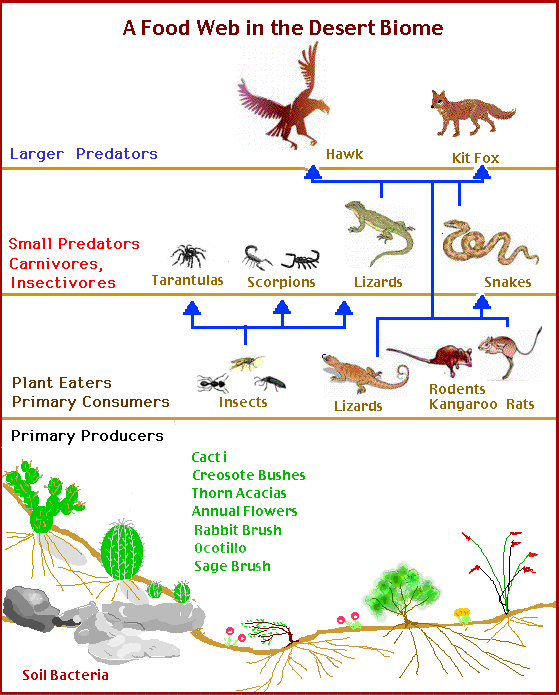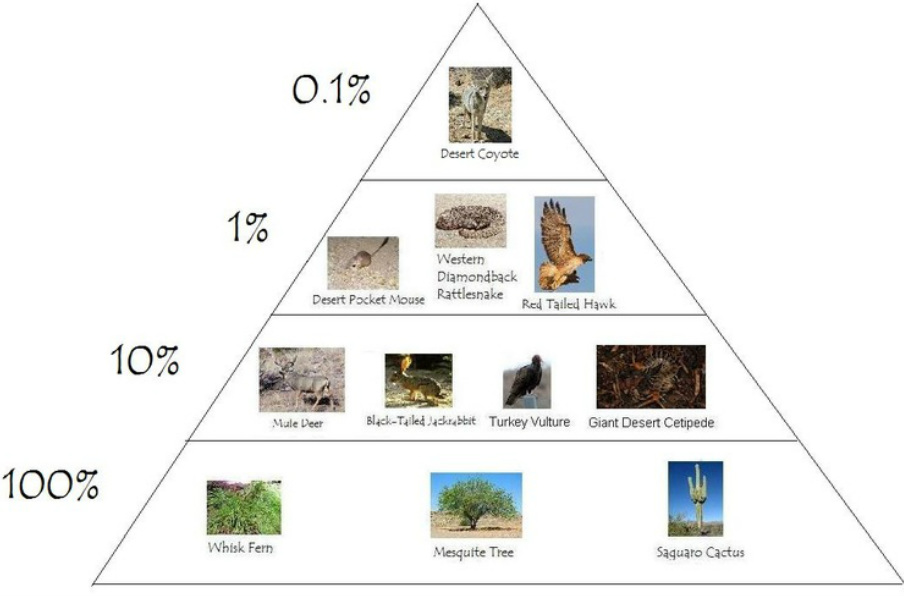Day 8
Today I learned about a general food web of the desert biome. I was able to also see some of these animals in action and I noticed there were cacti almost everywhere. The primary producers include cacti, creosote bushes, thorn acacias, annual flowers, rabbit brush, ocotillo, and the sage brush. The primary consumers, or plant eaters, are insects, rodents, kangaroo rats, and lizards. The small predators, carnivores, and insectivores in the desert include scorpions, larger lizards, snakes, and tarantulas. Finally, the largest predators of the desert are the hawks and foxes. I posted a picture of the desert food web below.
 |
| Food Web in the Desert Biome |
I also have a picture of an energy and biomass pyramid of a desert. The producers include the Whisk Fern, Mesquite Tree, and the Saguaro Cactus. Some primary consumers include the Mule Deer, Black-Tailed Jackrabbit, Turkey Vulture, and Giant Desert Centipede. Secondary consumers in this pyramid include the Desert Pocket Mouse, Western Diamondback Rattlesnake, and the Red Tailed Hawk. Finally, the tertiary consumer or top predator of this pyramid is the Desert Coyote. As you can see in the pyramid, energy decreases 10% at each trophic level starting from 100% with the producers.
 |
| Energy and Biomass Pyramid of the Desert Biome |
Hope these diagrams helped increase your knowledge of the desert biome! Have a good night.


Comments
Post a Comment